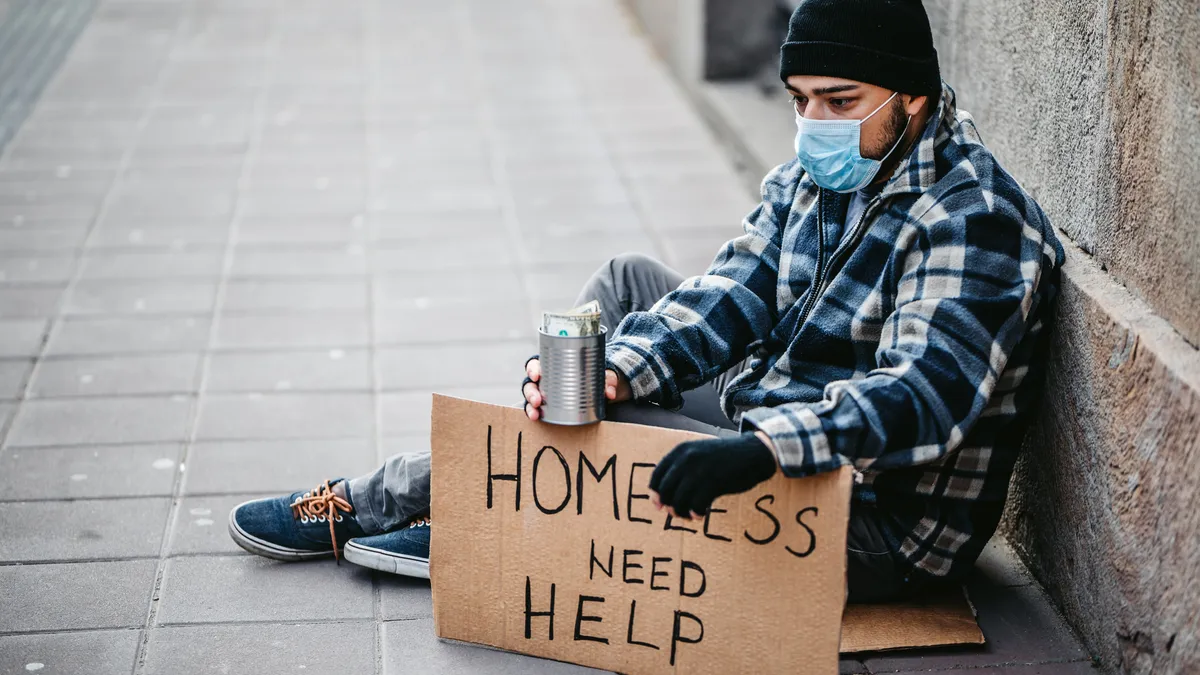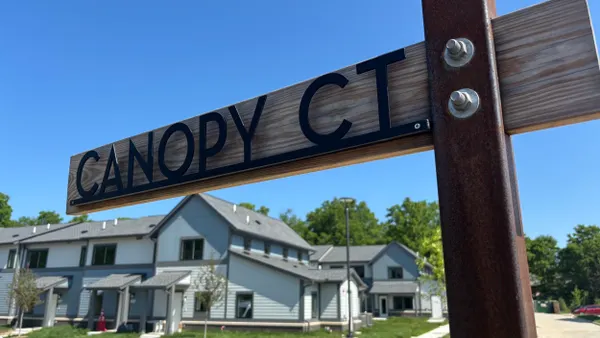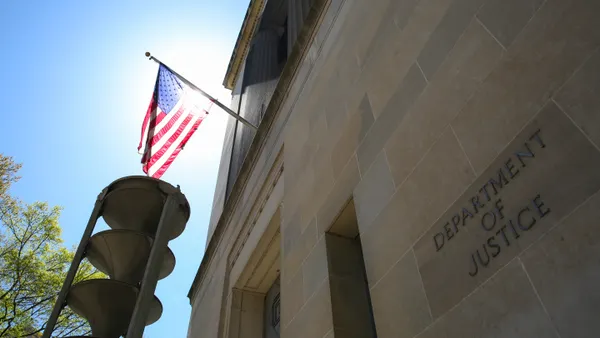Dive Brief:
- A total of 582,462 people experienced homelessness on a single night in January 2022, just a 0.3% increase since the last count in 2020, according to the U.S. Department of Housing and Urban Development in an announcement on Monday.
- Unsheltered homelessness increased 3.4% compared with the 2020 count, while sheltered homelessness decreased 1.6%. Veteran homelessness decreased 11% during that time, and homelessness among families with children declined 6%. Black and indigenous people remain overrepresented among those experiencing homelessness, HUD stated.
- In conjunction with the release of the annual point-in-time count, the U.S. Interagency Council on Homelessness released a plan that aims to reduce homeless 25% by 2025. The plan recommits the federal government to “proven” models for addressing homelessness, such as housing first, the Biden administration said in a press release.
Dive Insight:
Homelessness, which has increased in many U.S. cities in recent years, has become a political flashpoint as complaints grow about encampments in public areas. Cities have collectively spent billions on new shelters and affordable housing to try and address the crisis. Los Angeles’ newly elected mayor, Karen Bass, last week signed an emergency declaration around homelessness instructing city departments to speed up the approval process for affordable housing development projects. Other cities have implemented policies that ban people from camping in public spaces.
Some cities, such as Houston, have reduced their homeless populations significantly over the past decade by establishing strategies such as housing first with wrap-around services. Housing first finds individuals permanent, stable housing as quickly as possible while also providing case workers to help the individuals find needed services such as addiction treatment, mental health care and job training.
The new federal plan for addressing homelessness released Monday places strategies that address racial and other disparities at the forefront, as well as decisions backed by data and evidence. It also prioritizes strategies that “break down silos” between federal, state, local, tribal and territorial governments and public and private organizations, philanthropic sectors and people experiencing homelessness, the plan stated.
The plan also presented a strategy for increasing the supply of accessible housing and tailored support for people who are homeless or at risk of becoming homeless. It laid out actions to improve homelessness response systems and address housing instability among at-risk populations.
“My plan offers a roadmap for not only getting people into housing but also ensuring that they have access to the support, services, and income that allow them to thrive,” said President Joe Biden in a statement. “It is a plan that is grounded in the best evidence and aims to improve equity and strengthen collaboration at all levels.”
Last May, the Biden administration released a plan intended to address the housing supply shortfall in the U.S. It gave cities and towns with reformed zoning and land-use policies higher scores for certain federal grants, among other measures.
During the release of the 2022 homeless count, the Biden administration credited the relatively stable rate of homelessness due to federal interventions during the COVID-19 pandemic, such as the distribution of emergency rental assistance to over 3 million households and financial assistance through the child tax credit and stimulus checks through the American Rescue Plan Act.
“HUD and everyone in the Biden-Harris Administration is committed to ensuring every person has a safe, stable place to call home,” Housing Secretary Marcia L. Fudge. said in a statement. “Data shows that homelessness remains a national crisis, but it also shows that the historic investments this Administration has made to address this issue, can work.”











